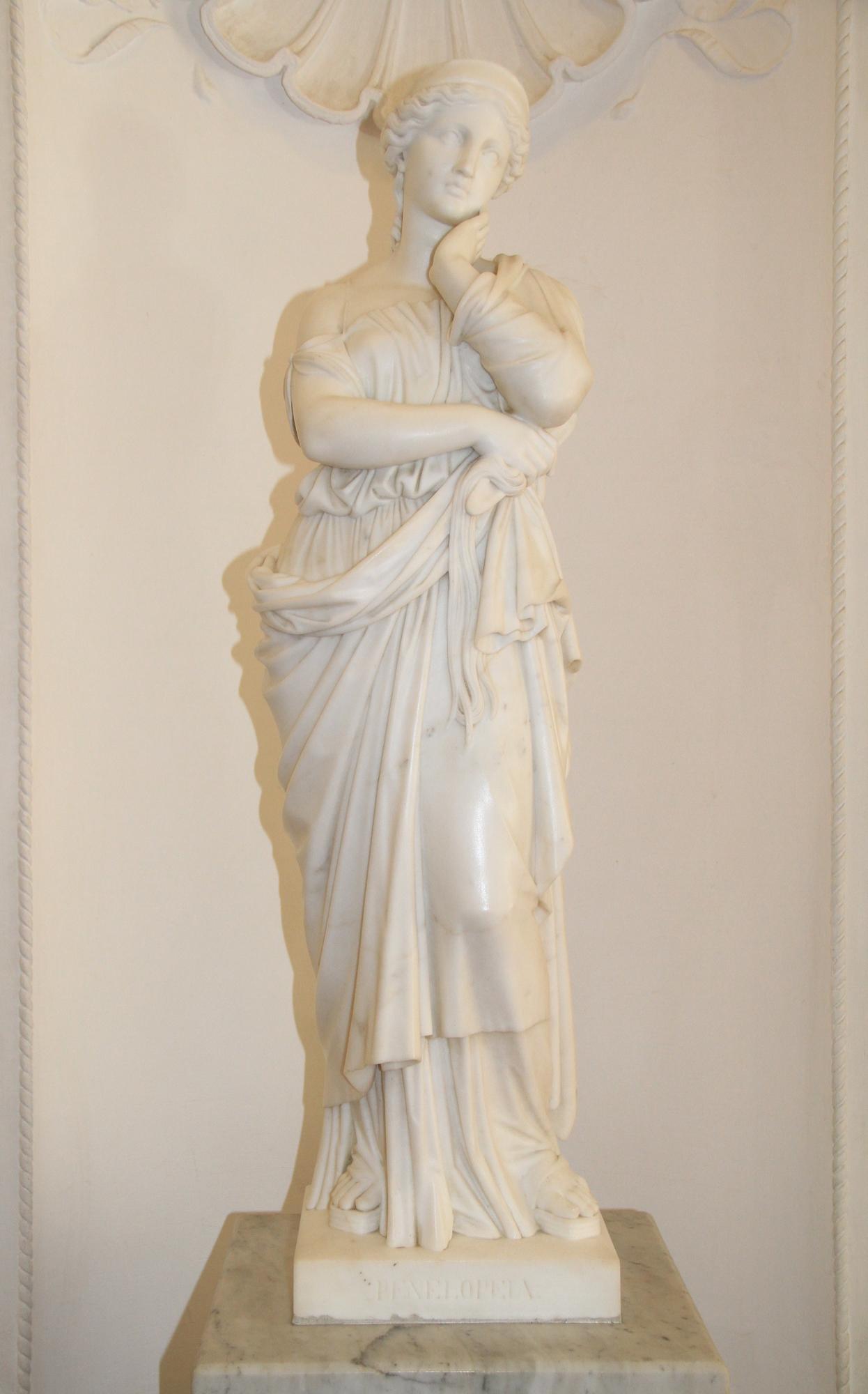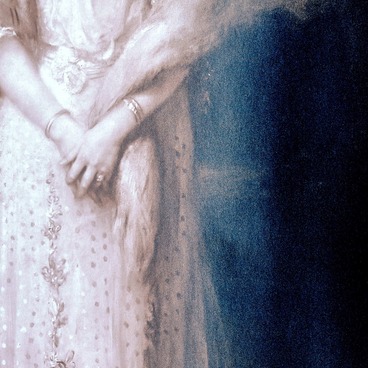The sculpture “Penelope” by the famous German sculptor Friedrich Brugger was a housewarming gift from the residents of Odessa to Empress Maria Alexandrovna, the wife of Emperor Alexander II, to welcome her to Livadia. The gift was also meant as a token of gratitude for her charitable work. The sculpture is made of white Carrara marble and rests on a marble pedestal.
The memorable gift for the empress and members of her family has since been located in one of the halls of the Livadia Palace. The pedestal of the sculpture features a carved and gilded inscription: “To Her Imperial Majesty the Grand Duchess Maria Alexandrovna, the most august guest of Southern Russia, on her housewarming. From the people of Odessa. 1863.” In 1911, during the construction of the new Grand Imperial Palace in Livadia to replace the demolished old one, the sculpture was preserved at the request of Emperor Nicholas II. It was transferred to the grand dining room where it became part of the decorative composition during the Emperor’s lifetime and since then has never been moved.
The sculpture was created by Friedrich Brugger (1815–1870), who was born in Munich and studied for several years at the Munich Academy of Fine Arts. Between 1841 and 1843, he resided in Italy. He sculpted his first pieces in Rome; later, he worked in Munich with marble and bronze, taking commissions from King Ludwig I. The Arc de Triomphe in Munich is crowned with Brugger’s famous bronze sculpture called “Bavaria in a Chariot Drawn by Lions”. Brugger’s designs were used to make marble statues of seven other sculptors (Peter Fischer, Lorenzo Ghiberti, Donatello, Benvenuto Cellini, Pietro Tenerani, John Gibson and Ludwig Schwanthaler) that were placed in the niches of the exterior walls of the Munich Pinakothek. During the reign of King Maximilian II, Brugger sculpted bronze statues of Friedrich Schelling and the king himself at the request of the Bayreuth town council. He also created such distinguished pieces as “Christ on the Cross” and “The Temptation of Christ by the Devil”.
The sculptor had a particular affection for characters of Greek mythology. His most well-known works on the subject include the statues “Penelope”, “Chiron Teaching Music to Young Achilles”, “Bacchus”, “Oedipus and Antigone” and others. “Penelope” is one of the most distinguished Brugger’s pieces, that successfully combines a most natural portrayal with classical forms and style.
The memorable gift for the empress and members of her family has since been located in one of the halls of the Livadia Palace. The pedestal of the sculpture features a carved and gilded inscription: “To Her Imperial Majesty the Grand Duchess Maria Alexandrovna, the most august guest of Southern Russia, on her housewarming. From the people of Odessa. 1863.” In 1911, during the construction of the new Grand Imperial Palace in Livadia to replace the demolished old one, the sculpture was preserved at the request of Emperor Nicholas II. It was transferred to the grand dining room where it became part of the decorative composition during the Emperor’s lifetime and since then has never been moved.
The sculpture was created by Friedrich Brugger (1815–1870), who was born in Munich and studied for several years at the Munich Academy of Fine Arts. Between 1841 and 1843, he resided in Italy. He sculpted his first pieces in Rome; later, he worked in Munich with marble and bronze, taking commissions from King Ludwig I. The Arc de Triomphe in Munich is crowned with Brugger’s famous bronze sculpture called “Bavaria in a Chariot Drawn by Lions”. Brugger’s designs were used to make marble statues of seven other sculptors (Peter Fischer, Lorenzo Ghiberti, Donatello, Benvenuto Cellini, Pietro Tenerani, John Gibson and Ludwig Schwanthaler) that were placed in the niches of the exterior walls of the Munich Pinakothek. During the reign of King Maximilian II, Brugger sculpted bronze statues of Friedrich Schelling and the king himself at the request of the Bayreuth town council. He also created such distinguished pieces as “Christ on the Cross” and “The Temptation of Christ by the Devil”.
The sculptor had a particular affection for characters of Greek mythology. His most well-known works on the subject include the statues “Penelope”, “Chiron Teaching Music to Young Achilles”, “Bacchus”, “Oedipus and Antigone” and others. “Penelope” is one of the most distinguished Brugger’s pieces, that successfully combines a most natural portrayal with classical forms and style.



